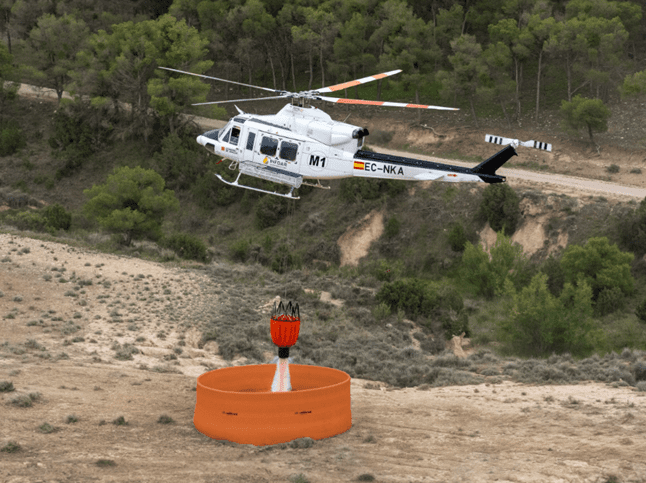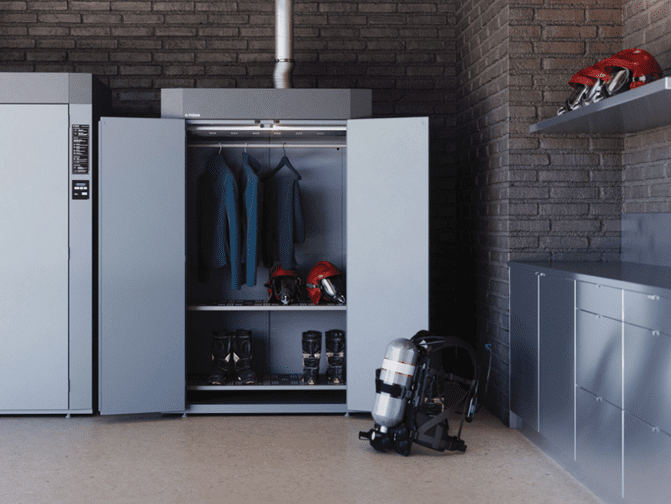Petrochemical companies and Fire Departments have to work together to ensure a safe environment for employees and neighbouring communities, explains Chevron Phillips
With the rise of the industrial revolution near the turn of the 19th century came the deadly industrial fire. The combination of machinery, fuel, and incendiary materials has provided the catalyst for some devastating industrial disasters over the last two centuries. Today, fire-fighters and petrochemical companies are trying to get ahead of these industrial dangers to provide a safe environment for employees and neighbouring communities.
America’s deadliest industrial incident occurred in Texas City, Texas in 1947 when a French cargo ship carrying 2,300 tonnes of ammonium nitrate was in port when its load detonated, starting a chain reaction of additional explosions and fires at nearby oil terminals. The shock was felt over 100 miles away in Louisiana, and 27 of the 28 members of the Texas City volunteer Fire Department were killed while fighting the fire, along with at least 575 civilians.
60 miles away, and 43 years later, a massive explosion at a chemical plant in Channelview, Texas nearly levelled an area the size of a city block and killed 17 workers. The explosion and resulting fires damaged two cooling towers, the plant’s cogeneration power facility and two large storage tanks. Here, the facility had an on-site fire brigade, and was aided by fire-fighters from a neighbouring chemical company, as well as Channel Industry Mutual Aid (CIMA), a cooperative of local emergency response agencies. As a result of the specially trained personnel, the fires were extinguished in only six hours.
It’s clear that the science of fire-fighting, and the multi-faceted challenges it brings, has come a long way during the intervening four decades. The Texas City incident provided the impetus for widespread adoption of disaster response planning at not only the plant, but also local and regional levels. Schools like the Emergency Services Training Institute (ESTI), part of the Texas A&M Engineering Extension Service (TEEX), train tens of thousands of emergency responders from around the world every year in programmes ranging from rescue training, oil spill management to industrial fire-fighting. Over the years, new training methods and technologies have prepared fire-fighting personnel to deal with increasingly dangerous and volatile situations like never before.
In addition to hosting a state-of-the-art simulation and computer-based training facility, TEEX’s Brayton Fire Training Field and Disaster City® facilities provide realistic fire-fighting situations for industrial, marine and other non-traditional scenarios. They understand that they must offer a variety of realistic hands-on experiences for their students in order to be effective.
“Incidents involving industrial sites and materials present very different hazards from the type of fires municipal departments face most often,” says Robert Moore, Director at ESTI. “As a result, it’s important that the scenarios we provide take traditional firefighting to the next level.”
Training campuses like Brayton Field do just that by creating challenging, authentic fire training scenarios with the use of special live fire training fluids (FTFs). Knowing that experience is paramount when it comes to fire-fighting, TEEX has invested in an FTF that provides realistic burn characteristics, allowing their fire-fighters to get the most effective hands on training possible.
E-III® Fire Training Fluids, available in both industrial and aviation grades, and produced by Chevron Phillips Chemical Company LP, is one such product that is used to simulate realistic hydrocarbon fires while also providing less risk to the environment.
“Before the development of FTFs, many departments and training centres used diesel, kerosene or a mixture of diesel and gasoline for their hydrocarbon live-fire training scenarios,” said Chris Yankee, Product Manager Specialty Chemicals for Chevron Phillips Chemical. “E-III® FTFs have been developed to burn more purely than traditional fossil fuels, and the unburned residues are stable and non-corrosive. The emissions from burning FTFs like E-III® contain lower levels of volatile organic compounds (VOC) and particulate matter than diesel, and less than 10ppm sulphur, making them safer for the environment, too.”
With special live fire training fluids like E-III® FTFs, field training officers can coach emergency response personnel through a challenging scenario that is safer for both fire-fighters and the environment than traditional fuels. FTFs will not mix with water, so protective clothing that is pre-wetted won’t absorb the product, which reduces risk and increases fire-fighter safety.
Aviation grade E-III® FTFs provide a realistic 700°F radiant heat fire, burning similarly to a ruptured fuel line, but with a high flash point that doesn’t generate dangerous pockets of unstable, flammable gas. And these large, hot flammable-liquid fires produced with E-III® FTFs gives students a sense of what they might actually encounter in a real emergency and allows them to use the same extinguishing agents they’ll use on the job, but in a controlled environment.
“The FTF product we use creates the signature smoke that helps with fire detection and wind direction, but as it burns, the smoke clears and dissipates quickly,” said Moore. “Using synthetic fire training fluids allows us to conduct training near populated areas without creating concerns from our neighbours who don’t see large clouds of thick, black smoke like they would with diesel or other mixtures.”
Fire training schools have found that Chevron Phillips Chemical’s E-III® FTF is an excellent training tool because it:
- Accurately replicates fires resulting from petroleum-based liquid hydrocarbons in plant and refinery settings;
- Burns cleaner, leaving little or no residue behind so that props for fire simulations can remain cleaner than when gasoline/diesel fuel is used; and
- Produces lighter smoke that is still sufficient for determining wind direction and speed.
- Not only does E-III® FTF simulate a hydrocarbon fire at an industrial plant, it accurately simulates a typical aircraft, motor vehicle, or watercraft liquid petroleum fuel fire that local fire departments encounter frequently. And because of the lower emissions compared with traditional training fuels, the trainees have less exposure to VOCs.
Nothing prepares fire-fighters to respond to industrial accidents and other emergencies like practical experience with live fires.
Timothy Sendelbach, 29-year fire and emergency services educator has said: “Ask any fire-fighter what they look for in a high-quality training programme and most will respond without hesitating: Realism. Training should not only be challenging, but should represent the situations that a firefighter will encounter."
Training facilities like Brayton Field provide a world-class experience of challenging and realistic scenarios, that when paired with Chevron Phillips Chemical’s E-III® Fire Training Fluids, help current and future first responders more safely prepare to successfully deal with 21st century emergencies.









